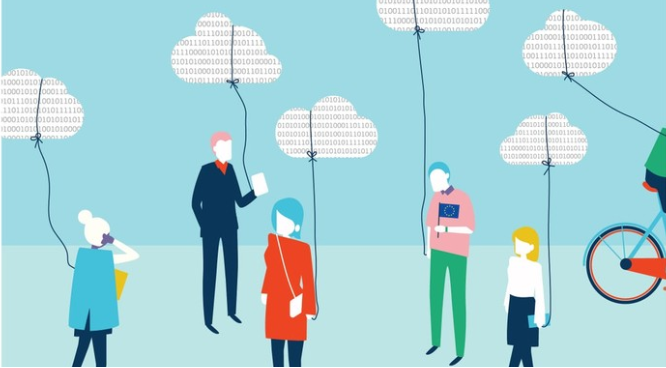Kristallnacht, or simply Pogromnacht, occurred 80 years ago on November 9-10, 1938. The Pogrom was…
Bridging the Divide: Championing Digital Inclusion in a Connected World
The digital age has revolutionized the way we live, work, and learn. However, a significant portion of the global population remains excluded from this revolution, facing a stark digital divide. This lack of access to technology and the internet creates a cascade of disadvantages, hindering education, employment opportunities, and access to essential information. Yet, amidst this challenge, inspiring initiatives are emerging, determined to bridge the digital divide and empower individuals and communities.
The Scope of the Challenge: A World Divided
According to the International Telecommunication Union (ITU), over 2.9 billion people lack access to the internet, hindering their ability to participate fully in the digital world. This divide disproportionately affects developing countries, rural communities, and marginalized groups. The consequences are far-reaching. Without internet access, individuals struggle to access educational resources, find employment opportunities, or connect with vital services like healthcare.
Empowering Solutions: Stories of Change
- Worldreader: Cultivating a Love of Reading
Worldreader tackles the digital divide by providing e-readers preloaded with ebooks to underserved communities. They partner with local organizations and schools to distribute the devices and train users on utilizing them effectively. This initiative fosters a love of reading, expands access to educational materials, and empowers individuals to become lifelong learners. Visit their website to learn more about their impactful work: https://www.worldreader.org/about-us/our-mission/.
- Bridge International Academies: Redefining Education in Rural Areas
Bridge International Academies, a network of schools in Africa and Asia, addresses the digital divide by integrating technology into their curriculum. They utilize low-cost tablets loaded with educational content and interactive learning tools. This approach personalizes learning, provides access to a wider range of resources, and empowers students to take charge of their education, even in remote locations.
- The Public Library of Science (PLOS): Open Access to Scientific Knowledge
The Public Library of Science (PLOS) champions open access to scientific research. They publish high-quality, peer-reviewed scientific journals freely available online. This initiative dismantles paywalls that often restrict access to crucial research findings, particularly in developing countries. By democratizing scientific knowledge, PLOS empowers researchers and the public to contribute to scientific progress and tackle global challenges. Explore their vast collection of open-access journals here: https://plos.org/.
The Road Ahead: Building a More Inclusive Digital World
Bridging the digital divide requires a multi-pronged approach. Here are some key strategies:
Infrastructure Development: Expanding internet access to remote areas through innovative solutions like low-orbit satellite internet is crucial.
Device Affordability: Making low-cost tablets and smartphones readily available can significantly increase access to technology.
Digital Literacy Training: Equipping individuals with the skills to navigate the digital world confidently is essential for maximizing the benefits of technology.
Content Localization: Developing educational content and online resources in local languages ensures inclusivity and caters to diverse needs.
The Power of Collaboration: A Collective Effort
Bridging the digital divide is a global challenge that requires collaboration between governments, non-profit organizations, the private sector, and individuals. By working together, we can ensure that the benefits of technology reach everyone, creating a more inclusive and equitable digital world.
Empower Yourself, Empower Others: Be Part of the Solution
There are numerous ways you can contribute to bridging the digital divide. You can volunteer your time to train others on using technology, donate to organizations working in this field, or advocate for policies that promote internet access and affordability. Every action, big or small, adds to the collective effort of creating a more connected world.
Remember, technology has the potential to be a powerful tool for empowerment and progress. Let’s work together to ensure everyone has the opportunity to participate in the digital age and unlock their full potential.
The digital age has revolutionized the way we live, work, and learn. However, a significant portion of the global population remains excluded from this revolution, facing a stark digital divide. This lack of access to technology and the internet creates a cascade of disadvantages, hindering education, employment opportunities, and access to essential information. Yet, amidst this challenge, inspiring initiatives are emerging, determined to bridge the digital divide and empower individuals and communities.
The Scope of the Challenge: A World Divided
According to the International Telecommunication Union (ITU), over 2.9 billion people lack access to the internet, hindering their ability to participate fully in the digital world. This divide disproportionately affects developing countries, rural communities, and marginalized groups. The consequences are far-reaching. Without internet access, individuals struggle to access educational resources, find employment opportunities, or connect with vital services like healthcare.
Empowering Solutions: Stories of Change
- Worldreader: Cultivating a Love of Reading
Worldreader tackles the digital divide by providing e-readers preloaded with ebooks to underserved communities. They partner with local organizations and schools to distribute the devices and train users on utilizing them effectively. This initiative fosters a love of reading, expands access to educational materials, and empowers individuals to become lifelong learners. Visit their website to learn more about their impactful work: https://www.worldreader.org/about-us/our-mission/.
- Bridge International Academies: Redefining Education in Rural Areas
Bridge International Academies, a network of schools in Africa and Asia, addresses the digital divide by integrating technology into their curriculum. They utilize low-cost tablets loaded with educational content and interactive learning tools. This approach personalizes learning, provides access to a wider range of resources, and empowers students to take charge of their education, even in remote locations.
- The Public Library of Science (PLOS): Open Access to Scientific Knowledge
The Public Library of Science (PLOS) champions open access to scientific research. They publish high-quality, peer-reviewed scientific journals freely available online. This initiative dismantles paywalls that often restrict access to crucial research findings, particularly in developing countries. By democratizing scientific knowledge, PLOS empowers researchers and the public to contribute to scientific progress and tackle global challenges. Explore their vast collection of open-access journals here: https://plos.org/.
The Road Ahead: Building a More Inclusive Digital World
Bridging the digital divide requires a multi-pronged approach. Here are some key strategies:
Infrastructure Development: Expanding internet access to remote areas through innovative solutions like low-orbit satellite internet is crucial.
Device Affordability: Making low-cost tablets and smartphones readily available can significantly increase access to technology.
Digital Literacy Training: Equipping individuals with the skills to navigate the digital world confidently is essential for maximizing the benefits of technology.
Content Localization: Developing educational content and online resources in local languages ensures inclusivity and caters to diverse needs.
The Power of Collaboration: A Collective Effort
Bridging the digital divide is a global challenge that requires collaboration between governments, non-profit organizations, the private sector, and individuals. By working together, we can ensure that the benefits of technology reach everyone, creating a more inclusive and equitable digital world.
Empower Yourself, Empower Others: Be Part of the Solution
There are numerous ways you can contribute to bridging the digital divide. You can volunteer your time to train others on using technology, donate to organizations working in this field, or advocate for policies that promote internet access and affordability. Every action, big or small, adds to the collective effort of creating a more connected world.
Remember, technology has the potential to be a powerful tool for empowerment and progress. Let’s work together to ensure everyone has the opportunity to participate in the digital age and unlock their full potential.



